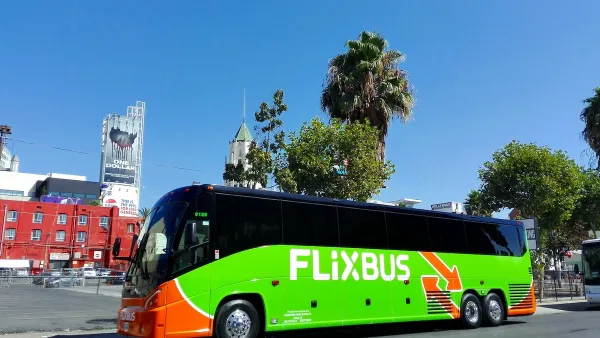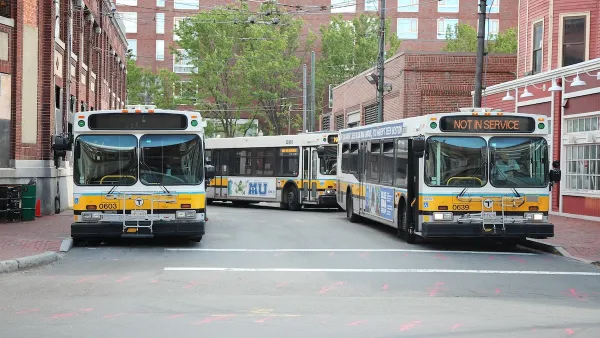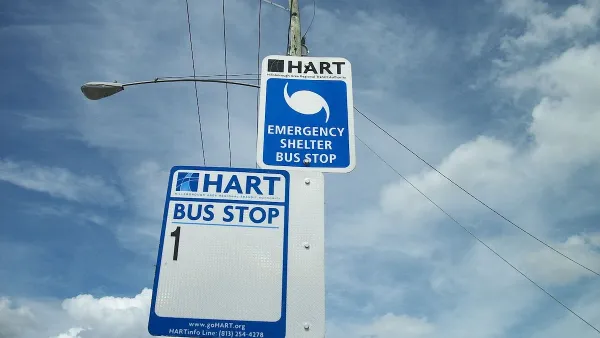The ambitious plan to transform the auto-oriented D.C. suburb of Tysons Corner into vibrant, walkable Tysons will require building a culture of public transportation, and buses are seen a central piece of that effort, reports Luz Lazo.
While recent stories have focused on the ways in which changing land use patterns will be crucial to the unprecedented retrofit of the D.C. suburb of Tysons Corner, shifting commuters to public transit will be essential to accommodating 80,000 more residents and 100,000 more jobs by 2050.
"Light rail, high-speed bus lanes and even driverless vehicles are among the ideas being bandied about for the urban center Tysons is seen becoming," says Lazo. "They are a testament to the vision for an area long defined by shopping malls and congested boulevards, and some of the futuristic ideas might actually become reality."
“Longer-term, there needs to be additional high-quality transit service into Tysons to support this vision of future development,” said Leonard Wolfenstein, Fairfax’s transportation planning section chief.
"For now," adds Lazo, "county planners see buses as that long-term mode of transportation. Bus development would be less costly than light rail or a smart-vehicle option, according to a county study."
“It is also more flexible given all the uncertainties about how Tysons is going to develop and where and when the development is going to occur over the years,” said Wolfenstein.
FULL STORY: Planning officials see buses at center of transit network serving Tysons Corner

National Parks Layoffs Will Cause Communities to Lose Billions
Thousands of essential park workers were laid off this week, just before the busy spring break season.

Retro-silient?: America’s First “Eco-burb,” The Woodlands Turns 50
A master-planned community north of Houston offers lessons on green infrastructure and resilient design, but falls short of its founder’s lofty affordability and walkability goals.

Delivering for America Plan Will Downgrade Mail Service in at Least 49.5 Percent of Zip Codes
Republican and Democrat lawmakers criticize the plan for its disproportionate negative impact on rural communities.

Test News Post 1
This is a summary

Test News Headline 46
Test for the image on the front page.

Balancing Bombs and Butterflies: How the National Guard Protects a Rare Species
The National Guard at Fort Indiantown Gap uses GIS technology and land management strategies to balance military training with conservation efforts, ensuring the survival of the rare eastern regal fritillary butterfly.
Urban Design for Planners 1: Software Tools
This six-course series explores essential urban design concepts using open source software and equips planners with the tools they need to participate fully in the urban design process.
Planning for Universal Design
Learn the tools for implementing Universal Design in planning regulations.
EMC Planning Group, Inc.
Planetizen
Planetizen
Mpact (formerly Rail~Volution)
Great Falls Development Authority, Inc.
HUDs Office of Policy Development and Research
NYU Wagner Graduate School of Public Service





























